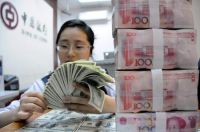
In a reward maximizing move, China has made its official exchange rate equal to that of the market exchange rate. The result of aligning the two exchange rates was that the Yuan has undergone devaluation of around three and a half percent over three days.
Of course there are two interpretations for the Yuan devaluation- one by China and the other by the rest of the world.
The financial world has assessed Beijing’s move as a devaluation effort to make export gains. Many analysts have described the step as currency war. Devaluating domestic currency increases exports at the same time decreasing imports.
Obviously, the Chinese economy is undergoing a tough and unprecedented slow growth phase. Even during the global financial crisis period, Chinese economy has continued its dream run. But now, when the entire world is in recession pressure, indications are that China is succumbing to slow growth.
Explanation for the Yuan devaluation from the Chinese central bank is that it is an outcome of market orientation of the currency. The People’s Bank has described that devaluation is a selection by the market forces.
Senior official from PCB, Yi Gang has said the central bank “no longer regularly intervenes in the exchange rate but will continue to manage it, especially when volatility exceeds a tolerable range, to let market forces decide the yuan’s valuation.”
China has been orchestrating many measures over the last one decade to make the Yuan as a hard currency like the US Dollar. Bilateral local currency trade settlements, Yuan denominated loans etc were initiated by Beijing to accelerate the internationalization of Yuan.
A path breaking event in Yuan internationalization is its inclusion in SDR’s currency basket. At present, there are four currencies – the Dollar, Euro, Pound Sterling and Yen in SDR’s currency basket.
Last week, the IMF has made reported that it will consider the inclusion of Yuan under the currency basket by September 2016. The indirect message to Beijing was that it has to introduce many other measures for considering Yuan.
Now, what is happening to Yuan is good for the Chinese economy. It will bring more money to China because of the devaluation. At the same time, the market orientation measure will make it as an international currency. The move is well orchestrated and calculated that brings two birds in one shot.
But the nature and history of policy making in China shows that Beijing will be always serious about achieving and maintaining high growth rate than opting for currency pride. Hence, current devaluation has more growth stimulating purpose than making the Yuan internationalization. The currency reform is a good excuse to pursue growth stimulus through devaluation.










